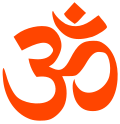Hindu temple in Kerala, India
| Kanadikavu Shree Vishnumaya Kuttichathan Swamy Temple | |
|---|---|
 | |
| Religion | |
| Affiliation | Hinduism |
| District | Thrissur |
| Deity | Vishnumaya |
| Festivals | Thiravellattu Mahotsavam, Thottampattu festival |
| Location | |
| Location | Peringottukara |
| State | Kerala |
| Country | India |
| Geographic coordinates | 10°25′20″N76°7′55″E / 10.42222°N 76.13194°E / 10.42222; 76.13194 |
| Architecture | |
| Type | Fusion of Kerala Architecture, Aryan Architecture and Tamil Architecture |
| Website | |
| www | |
The Kannadikavu Shree Vishnumaya Kuttichathan Swami temple is a Vishnumaya temple located 20 km southwest of Thrissur in Peringottukara, Kerala, India. [1] [2] [3]
Contents
- Deities
- History
- Roopakkalam
- Main offerings to the deity
- Festivals
- Thiravellattu Mahotsavam
- Thottampattu festival
- References
- External links
The principal deity of the temple is Vishnumaya, a Kuttichathan, although 320 other Kuttichathans are also worshipped at the temple. [4] [ unreliable source? ] Brahmashree Vishnubharatheeya currently serves as the temple's chief priest. [5] [6] The temple is associated with the Ezhava community, who traditionally worship Vishnumaya.


